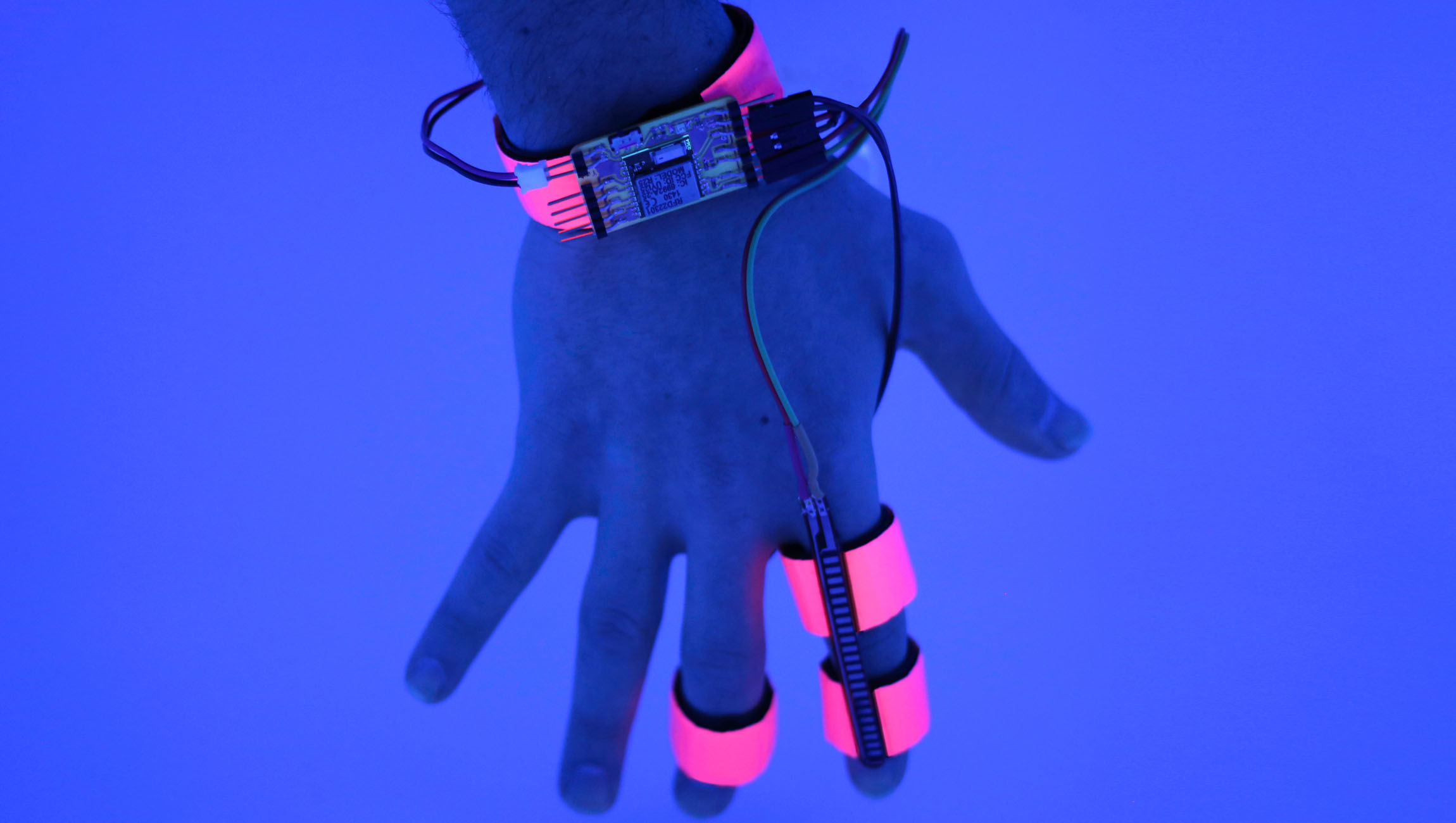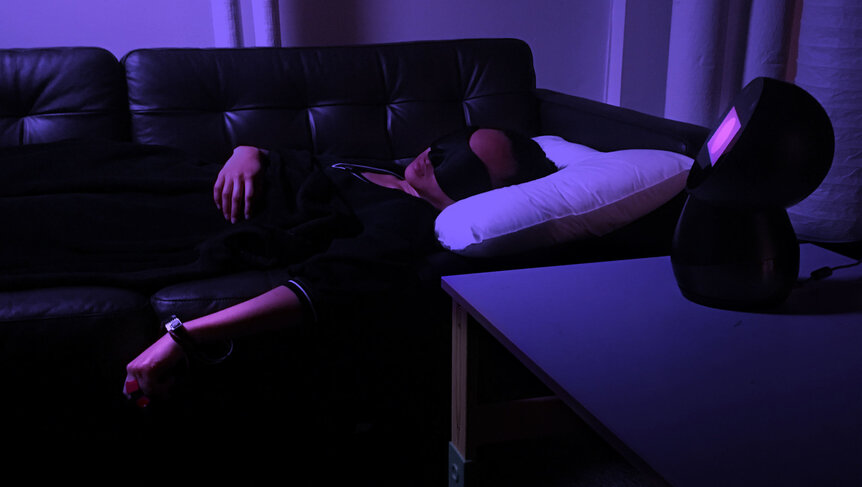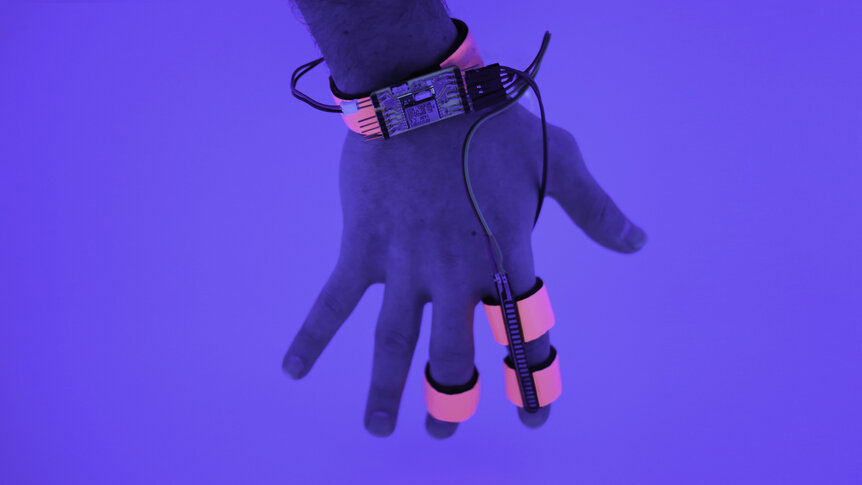Create a free profile to get unlimited access to exclusive videos, sweepstakes, and more!
Welcome to the future, where your dreams get hacked

Of all the things you’ve seen in science fiction, you could only dream of this one.
Sleep ventures into realms of the human mind that have yet to be explored. There is a vast wonderland of creative potential that just vanishes from memory. What lies in the human subconscious could reveal things that we couldn’t even imagine, and now there is a portal to that world. This is why Adam Horowitz and his colleagues at MIT have prototyped Dormio, which is supposed to interface with dreams to explore the depths of our subconscious.
“The brain, it turns out, is not passive at all during sleep, just different active than wake. And this whirring of activity is not just ongoing in the sleeping brain, it is experienced in the sleeping mind, active in dreams even as we … lie still and silent,” Horowitz, who also submitted a study to AltCHI, said in his thesis, adding that “We find ourselves where the wild things are.”
Those wild things may never be tamed, but can be remembered more vividly with the right technology. This is what Horowitz is seeking with the glovelike device he developed. Dreams start to emerge within the first few minutes of sleep. When you start to fall asleep, you enter the semi-lucid state otherwise known as hypnagogia, which Dormio is supposed to capture dreams from. You don’t exactly catch a dream like you catch a butterfly. This is a kind of tech that aims to control dream content in order to do controlled experimentation on that content. It sounds like a sort of biotech VR or AR, but it’s more than that.
Dreaming can release untapped creativity that lies in subconscious or even unfinished conscious thoughts, which is why Thomas Edison trained himself to recognize the hypnagogic state so he could resolve problems he had trouble figuring out during his waking moments.
He was right. The hazy dreams that begin during hypnagogia could possibly boost performance across a variety of areas. Hypnagogia can also prove to be therapeutic for trauma. Nightmares and night terrors are extremely common in people with PTSD, and Dormio could help them cope by having them experience traumatic events and unresolved inner conflicts as anxiety-free images during the state of hypnagogia.
“Creativity is an altered state of mind … decreased inhibition has been shown to greatly help this creative idea generation,” Horowitz said in the study.
Horowitz even believes you can hack dreams to learn while asleep. Introducing certain sensory cues can tell the brain to remember certain things you see in dreams, things that can evanesce so easily once you wake. Learning in your sleep is called hypnopaedia. Subjects can be taught to overcome fears by pairing images of what they fear with positive stimuli (such as a pleasant smell). They can also be convinced to quit habits such as smoking with images of those actions paired with negative stimuli. When the person is awake, being exposed to those same stimuli can trigger the same responses they had while asleep, but Dormio still goes further than that.
“The most commonly known method for altering dream content is lucid dreaming. In a lucid dream, one becomes aware that they are in a dream, and often gains some degree of control over the content of the dream … it creates a strange, fantastic hybrid state where we regain our sense of self and control in a dream,” Horowitz explained in his thesis.
The thing is, lucidity happens in a much later state of REM (rapid eye movement) sleep, while hypnagogia occurs during an early stage of NREM (non-rapid eye movement) sleep. Dormio can’t delve that far. Yet. What it can do is help you retain the memories of what you see during that early phase, so you can possibly use them to have more control over your waking life. Horowitz and his team kept an audio recorder on so subjects could speak their dreams while they were in that semi-lucid state without forcing themselves awake. They have found that the content of audio recorded during hypnagogia often ends up appearing in dreams.
Dream tech will continue to advance as Horowitz keeps upgrading Dormio and develops more dream-tracking devices for other parts of the body. Maybe the wild things can’t be tamed, as the voice of Maurice Sendak echoes, but they can be led.
(via MIT/Adam Horowitz)
















